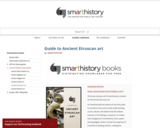
This book contains all of Smarthistory’s content for the Ancient Etruscan art.
- Subject:
- Art History
- Arts and Humanities
- Material Type:
- Reading
- Provider:
- Smarthistory
- Author:
- SmartHistory
- Date Added:
- 11/18/2021

This book contains all of Smarthistory’s content for the Ancient Etruscan art.
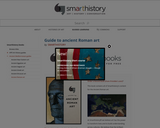
This book contains all of Smarthistory’s content for the Ancient Roman art.
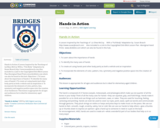
Hands in Action
A Lesson Inspired by the Teachings of Liz Shea-McCoy With a “Full-Body” Adaptation by Susan Brasch http://www.susanjbrasch.com Also included is a Link to the Copyrighted Dick Blick Lesson Plan Aboriginal Hand Prints www.dickblick.com which can also be found in this hub.
Objectives:
1. To Learn about the importance of hands
2. To identify the many uses of hands
3. To create art using hands (and other body parts) as both a vehicle and an inspiration
4. To incorporate the elements of color, pattern, line, symmetry and negative positive space into the creation of art
Audiences:
This lesson is appropriate for all ages and audiences but is ideal for elementary-aged children.
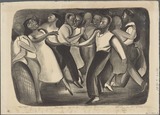
Students will be presented with foundation knowledge of the Harlem Renaissance, experience some sights and sounds of this movement, then gain deeper knowledge by creating a virtual “museum exhibit” of a famous artist or author to share with others. At the end of the lesson, students will evaluate the impact and significance of the Harlem Renaissance, and consider how the arts can serve as vehicles for social change.
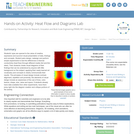
Students' eyes are opened to the value of creative, expressive and succinct visual presentation of data, findings and concepts. Student pairs design, redesign and perform simple experiments to test the differences in thermal conductivity (heat flow) through different media (foil and thin steel). Then students create visual diagrams of their findings that can be understood by anyone with little background on the subject, applying their newly learned art vocabulary and concepts to clearly communicate their results. The principles of visual design include contrast, alignment, repetition and proximity; the elements of visual design include an awareness of the use of lines, color, texture, shape, size, value and space. If students already have data available from other experiments, have them jump right into the diagram creation and critique portions of the activity.

This is not a metallurgy class! Learn everything you ever wanted to know about Heavy Metal music. Topics of this video lecture series include musicology, history, metal culture, music theory, songwriting tropes, harsh vocal techniques, extreme metal, tech-based instruments, and how the genre tackles some of today’s biggest sociopolitical challenges. You’ll find out why metal bands exist in every country on Earth, and why you’re probably already a metalhead without even knowing it. This course has been rockin’ MIT’s Independent Activities Period (IAP)* since 2006!
2023 Video Lectures:
Heavy Metal 101: Music and Culture
The Guts of Metal - Music Theory and Songwriting with Colin Brumley
All About Harsh Vocals – History, Application, and Technique with Paul Buckley
History of Heavy Metal, Part I
Connections Between Metal and Literature with Dean Swinford
History of Heavy Metal: Part II
GeoShred and Technology-Based Expressive Musical Instruments with Jordan Rudess
History of Heavy Metal: Part III
The class video lectures from 2021 to the present are available on the site.
*IAP is a 4-week term at MIT in January that provides members of the MIT community with an opportunity to organize, sponsor, and participate in activities and topics that are often outside of the regular MIT curriculum.
![Heritages of Change: Curatorial Activism and First-Year Writing [Revised Edition]](https://img.oercommons.org/160x134/oercommons/media/upload/materials/images/Cover_RotelProject_FiSU_HeritageofChange-RE.jpg)
This textbook, Heritages of Change: Curatorial Activism and First-Year Writing, includes principles of writing and information literacy through the lenses of curatorial activism, cultural heritage, and curation/exhibition. Heritage topics that students are introduced to include (but are not limited to): anti-racism, #MeToo, indigenous peoples, women/gender/LGBTQIA+, climate change, etc. They gain a broader understanding of cultural heritage and heritages of change, particularly disability heritage, in general in order to apply the concepts through their writing. This textbook presents these topics, but more specifically how to communicate about and research them.
In first-year writing courses, it can often feel that we practice writing and research in a vacuum. Writing is about communication, and, if we do not feel that we have an audience, then it can seem like our writing has no purpose (even though practice of any kind will help us develop these skills). Heritages of Change: Curatorial Activism and First-Year Writing is a method for students to think about the social changes that were prevalent during the COVID years and remain important in their wake. Heritages of Change is a lens for thinking and writing about these ideas. Through curation and exhibition as an act of activism, students focus on a specific audience with whom they can communicate authentically about this dynamic world.

This seminar offers a critical review of scholarship on Islamic architecture through close reading of scholarly texts, museum exhibitions, and architectural projects. It also tackles methodological and historiographical questions about the field’s formation, genealogy, recent expansion, and its evolving historical and theoretical contours.
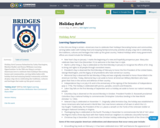
Holiday Arts!
Lessons Submitted by
Cathy Harrington, Marilyn Stadler and Donna Williams
Learning Opportunities:
In the USA one thing is certain—Americans love to celebrate their holidays! Decorating homes and communities, serving tables laden with holiday food and enjoying family/community activities all play a big role in celebrating the traditions, cultures and heritages that make up this great country
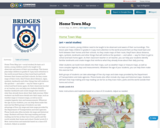
Home Town Map
(art + social studies)
As basic as it seems, young children need to be taught to be observant and aware of their surroundings. This lesson plan helps children in grades K–3 pay more attention to the world around them as they travel back and forth between their homes and their schools. As they create maps of their route, they’ll learn about distance, signs, symbols, landmarks and other things that will reinforce the quickest — and safest — way for them to get to school and back home again. As their classroom teacher or art teacher, you can help your students identify familiar landmarks and create images that reinforce what they already know about their daily journey.
Older students can build more details into their maps, such as weather maps or treasure maps, as well as more complex legends, keys and measurements. Whatever the age of your students, you can help them make this exercise fun!
Both groups of students can take advantage of free city maps and state maps provided by the Department of Transportation and state agencies. Phone books also often include city maps and historical maps. Students will learn that map-making and map-reading can be fun as they trace rivers, parks and the world outside their home and school.
Grade Levels K-6
Note: instructions and materials based on a class of 25 students. Adjust as needed.
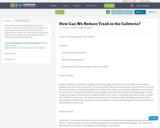
This problem based learning (PBL) activity allows students to become educated on how excess waste can harm the environment. This activity then has the students form a plan on how their school can limit trash output in their cafeteria, and then sending a letter to their principle describing their plan.

This is a 2-hour lesson plan designed for elementary students to introduce them to the basics of art critique, using digital tools and collaborative activities. It follows a STEAM approach and focuses on developing vocabulary and communicative competences (writing, speaking, listening, and reading).
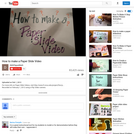
Looking for a powerful yet simple, low-tech way to integrate digital storytelling into your classroom? Then I’ve got an answer for you: Paper Slide Videos. Just like the name implies, this technique actually involves the sliding of papers to create a movie. Yep, without needing much time, effort and/or tech skills, a fabulous video can be produced. Here’s how:
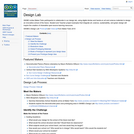
Maker Faire participants collaborate in ISKME's Design Lab, using digital stories and salvaged materials to design an innovative school of the future. The Design Lab features Makers Mauro ffortisimo Di Nucci's deconstructed piano and INKA Biospheric Systems' Vertical Garden; as well as Student and Teacher project examples that integrate art, science, sustainability, and green design inspire the creation of shareable open-source learning resources. This wiki page showcases photos and video from the Design Lab, open educational resources for teachers, and a step by step guide through the design process.
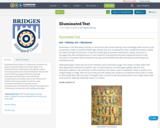
Illuminated Text
Grades 5 -12
Objectives:
Students will gain an understanding of how books began to be produced and how information through the written word was passed on for centuries
Students will describe ways in which art supports literature through decoration and illustration to provide better comprehension and added value to the written word
Students will use principles of contrast, unity, movement and balance to provide artistic ornamentation to text
Students will have the experience of learning an ancient decorative gilding technique
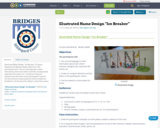
Illustrated Name Design “Ice Breaker”
A Lesson Submitted by
Marilyn Stadler
Objectives:
The participants will:
1. Use art and language to share information about each other’s interests, backgrounds, important life events, etc.
2. Create art using art elements and the letters in the participants’ names
3. Use the artwork as name plates for future
Audiences:
Suitable for all who have the ability to write their names.
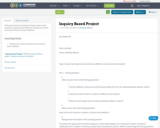
This project involves students solving an open ended question of exploring how different cultures around the world use art forms in their traditions.

Students observe live insects and examine insects depicted in a seventeenth-century drawing. They identify the three characteristics of an adult insect: a three-part body (head, thorax, and abdomen), six legs, and antennae. They collect and draw live insects, incorporating a variety of shapes and lines.
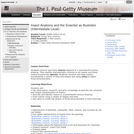
Students observe and study insects depicted in a seventeenth-century drawing. They identify characteristics common to all insects and those unique to particular species. Students research and draw insects, incorporating a variety of lines and shapes and using value to depict three-dimensionality.
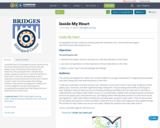
Inside My Heart
A Copyrighted Activity Created by and Re-posted with Permission from Kristina Marcelli Sargent http://kristinamarcelli.wordpress.com
Objectives:
The participants will:
1. Identify those people, animals, memories, etc. that they hold dear in their hearts
2. Use color and symbolism to show importance of those listed above in their lives
3. Reflect on their “heart” and acknowledge their feelings
Audience:
This activity was designed for children but could be helpful for any age of participant in recognizing those people (and other things) that have held importance in their lives.